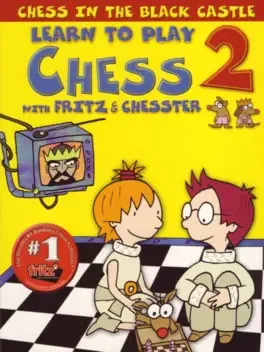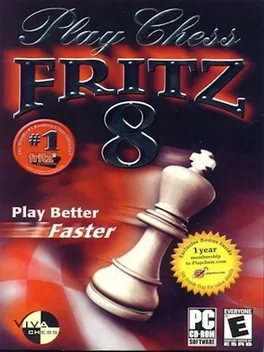Chessmaster II
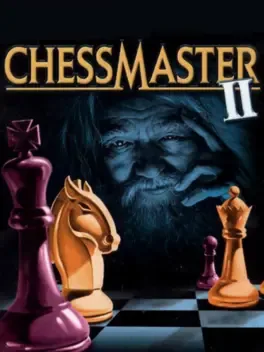
Buy
Part of collection:
Chessmaster
(last 3 games)
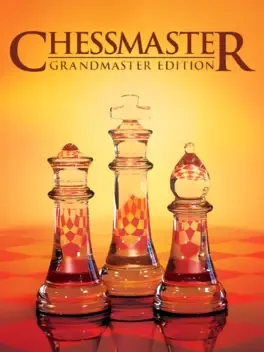
Chessmaster: Grandmaster Edition expands the scope of chess to include broader principles of learning. Josh Waitzkin's much-anticipated book The Art of Learning (Free Press) is designed to pave the road to successful long-term growth on and off the chessboard. The eight-time National Chess Champion and two-time martial arts World Champion puts users in his shoes in some of the most riveting and formative moments of his chess career, including the legendary climactic game from the book and film Searching for Bobby Fischer. Waitzkin then turns to the classics, introducing beginners to brilliant games from some of the most important players in the history of chess. In his most revealing commentary ever, Waitzkin not only teaches the beginning chess player the fundamentals of the game, but also humanizes the road to mastery. Never has chess been so exciting.
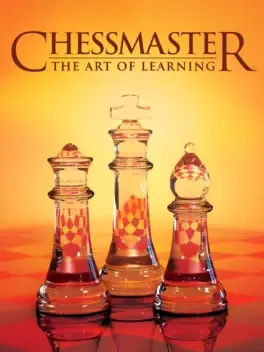
Chessmaster: The Art of Learning expands the scope of chess to include broader principles of learning. Josh Waitzkin's much-anticipated book The Art of Learning (Free Press) is designed to pave the road to successful long-term growth on and off the chessboard. The eight-time National Chess Champion and two-time martial arts World Champion puts users in his shoes in some of the most riveting and formative moments of his chess career, including the legendary climactic game from the book and film Searching for Bobby Fischer. Waitzkin then turns to the classics, introducing beginners to brilliant games from some of the most important players in the history of chess. In his most revealing commentary ever, Waitzkin not only teaches the beginning chess player the fundamentals of the game, but also humanizes the road to mastery. Never has chess been so exciting.
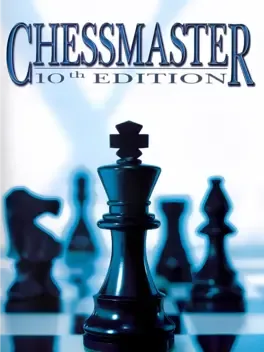
The 10th Edition is the first game in the series to feature a working online component and also the first PC version to feature animated chess sets and customizable interface.
Could be interesting
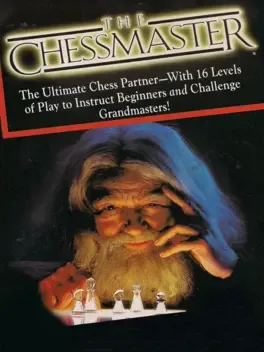
The Chessmaster is a game where the player has the chance to play against the CPU controlled Chessmaster at a standard game of chess. To play the game the player must pick up the chess pieces with there hand cursor and place it in the desired location, within the rules a standard chess game. There are 16 different difficulty levels that includes 2 beginner levels, 13 standard levels (ranging from an average of 5 seconds to 4.5 minutes per shot depending on level), and a infinite level that will keep thinking of a shot until a perfect shot can be made or it is forced to move. There is also a teaching mode that shows the player all the possible moves with the selected piece. Two players can play each other with two controllers and there is also an option of letting the Chessmaster play itself.

The 10th Edition is the first game in the series to feature a working online component and also the first PC version to feature animated chess sets and customizable interface.

Here, order is maintained by the Church of Seiros, which hosts the prestigious Officer’s Academy within its headquarters. You are invited to teach one of its three mighty houses, each comprised of students brimming with personality and represented by a royal from one of three territories. As their professor, you must lead your students in their academic lives and in turn-based, tactical RPG battles wrought with strategic, new twists to overcome. Which house, and which path, will you choose?

Based on the popular computer chess program, The Chessmaster 3-D for the PlayStation allows players to challenge a friend or one of 12 virtual chess opponents. Each computer-controlled opponent is rated according to ability. There are also six unique chess sets (each with animated pieces) from which to choose, including Alphabet, Celestial, Deco, Mechanical, Modern, and Staunton. If you need assistance in deciding which pieces to move in order to secure a checkmate, the ChessMaster is available to lend a helping hand. You can perfect your chess playing skills using various teaching options; you can even view the computer's thought process as it "thinks" through each move. While this is obviously a 3D title, you can switch the camera angle for a more traditional two-dimensional perspective. The camera is adjustable in that you're able to zoom it in and out until you find a view that is to your liking. You can even switch playing sides (from black to white pieces or vise versa) or simply have a quick look at the other side of the board.

Origin The original SARGON was written by Dan and Kathleen 'Kathe' Spracklen in a Z80-based computer called Wavemate Jupiter III[1] using assembly language through TDL Macro Assembler. The name was originally written entirely in capitals because early computer operating systems such as CP/M did not support lower-case file names. Introduction SARGON was introduced at the 1978 West Coast Computer Faire where it won the first computer chess tournament held strictly for microcomputers, with a score of 5-0.[2][3] This success encouraged the authors to seek financial income by selling the program directly to customers. Since magnetic media were not widely available at the time, the authors placed an advert in Byte Magazine and mailed $15 photocopied listings that would work in any Z80-based microcomputer.[1] Availability of the source code allowed porting to other machines. For example, the March–April 1979 issue of Recreational Computing describes a project that converted Sargon to an 8080 program by using macros. Later the Spracklens were contacted by Hayden Books and a book was published.[4] Commercialization through electronic media When magnetic media publishing became widely available, a Navy Petty Officer, Paul Lohnes, ported Sargon to the TRS-80, altering both graphics, input, and housekeeping routines leaving the Spracklen's chess-playing algorithm intact. Paul consulted with the Spracklens, both living in San Diego at the time, to make the TRS-80 version an instant success with the help of Hayden Book's newly established software division: Hayden Software. Paul was not involved in further refinements to the TRS-80 version due to his reassignment to sea duty shortly after signing the deal with Hayden Software. In the early 1980s SARGON CHESS was ported to several earlier microcomputers, i.e. NASCOM (by Bits & PCs, 1981), Exidy Sorcerer, Sharp MZ 80K,[5] and many others. A complete rewrite was necessary later for the Apple II port, made by Kathleen's brother Gary Shannon. Both were published by Hayden Software. Sequels The Spracklens made significant improvements on the original program[1] and released Sargon II. In 1978 it tied for third at the ninth North American Computer Chess Championship despite being seeded ninth of 12 entries. Sargon finished only behind Belle and Chess 4.7, and defeated AWIT—running on a $5 million Amdahl mainframe—amazing the audience.[6][3][1] That year they published a series of articles in BYTE on computer chess programming,[2][7] stating "we think it would be nice if not everyone had to reinvent the wheel".[6] Sargon II was ported to a variety of personal computers popular in the early 1980s.[8] The game engine featured multiple levels of lookahead to make it more accessible to beginning chess players. BYTE in 1980 estimated that Sargon II had a 1500 rating at the highest tournament-time difficulty level, and speculated that it was the best chess program on sale, including dedicated devices.[9] Sargon 2.5, sold as a ROM module for the Chafitz Modular Game System, was identical to Sargon II but incorporated pondering.[10] It received a 1641 rating at the Paul Masson tournament in June–July 1979, and 1736 at the San Jose City College Open in January 1980.[3] Sargon 3.0 finished in seventh place at the October 1979 North American Computer Chess Championship. The competition had improved, but 3.0 drew against Cray Blitz and easily defeated Mychess, its main microcomputer rival. In December 3.0 easily won the second microcomputer championship in London.[3] In 1980, the Spracklens' Reversi game finished in first place at a computer tournament at Northwestern University, and in 1981 it finished in third place at the Santa Cruz Open Othello Tournament.[11] Sargon III was a complete rewrite from scratch. Instead of an exchange evaluator, this version used a capture search algorithm. Also included was a chess opening repertoire. This third version was written originally for the 6502 assembler and was commercially published by Hayden Software in 1983. Apple contacted the Spracklens and, after a port for 68000 assembly, Sargon III was the first third-party executable software for the Macintosh.[1] After the demise of Hayden Software, later chess programs were also released under the name Sargon, including Sargon IV (Spinnaker Software), Sargon V (Activision) and a CD-i title simply named Sargon Chess. The Spracklens concurrently wrote the engines for the dedicated chess computers produced by Fidelity Electronics, which won the first four World Microcomputer Chess Championships.
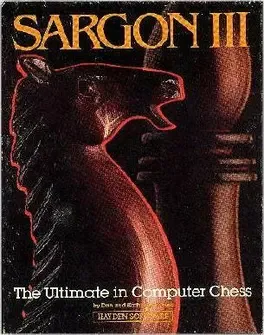
Third in a series of chess games.
Chess Player 2150 is a chess program which played well against the other chess programs of the day and won the 1989 British Open Personal Computer Chess Championship (according to a post in ST Report International Online Magazine, November 13, 1992, No.8.45). The author was not shy about his program's prowess. Built into the program is a pull-down menu, giving it's performance against Chessmaster 2000, Chessmaster 2100 and Colossus X, in 10 games apiece. The game was designed to improve as it played, so over time a game that played against good players would be much better than when it first began. Users have the option of saving, so that the gained intelligence isn't lost.
